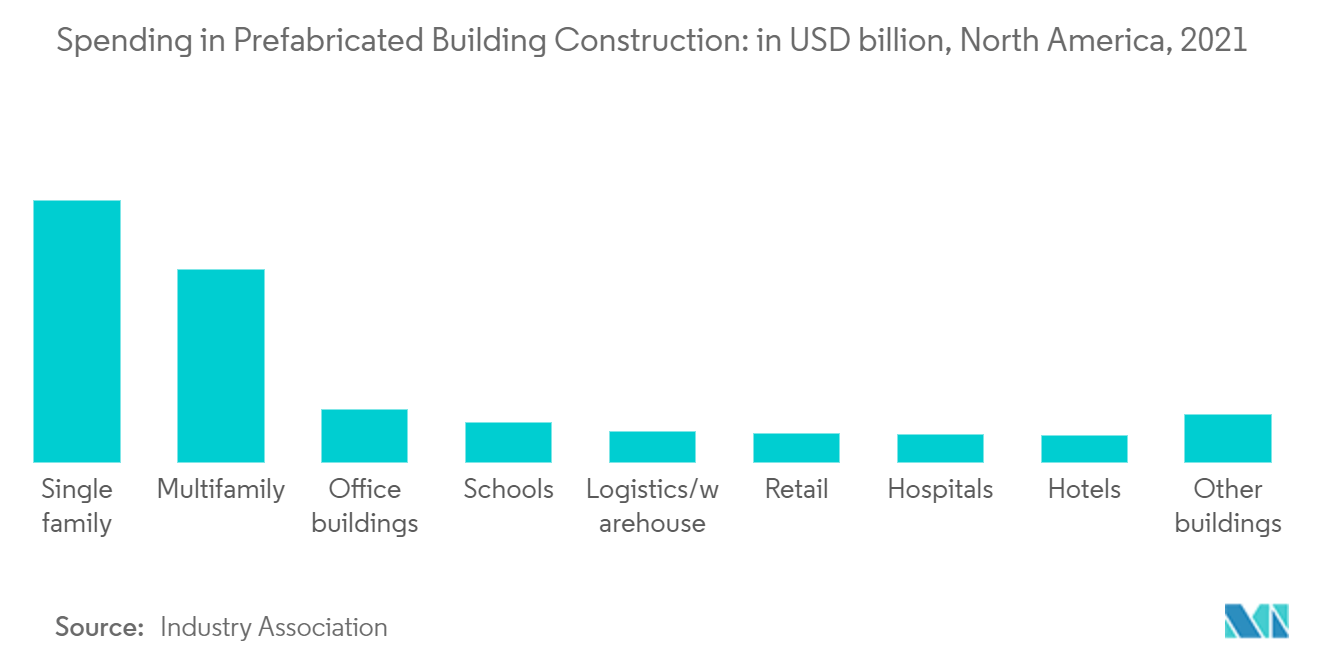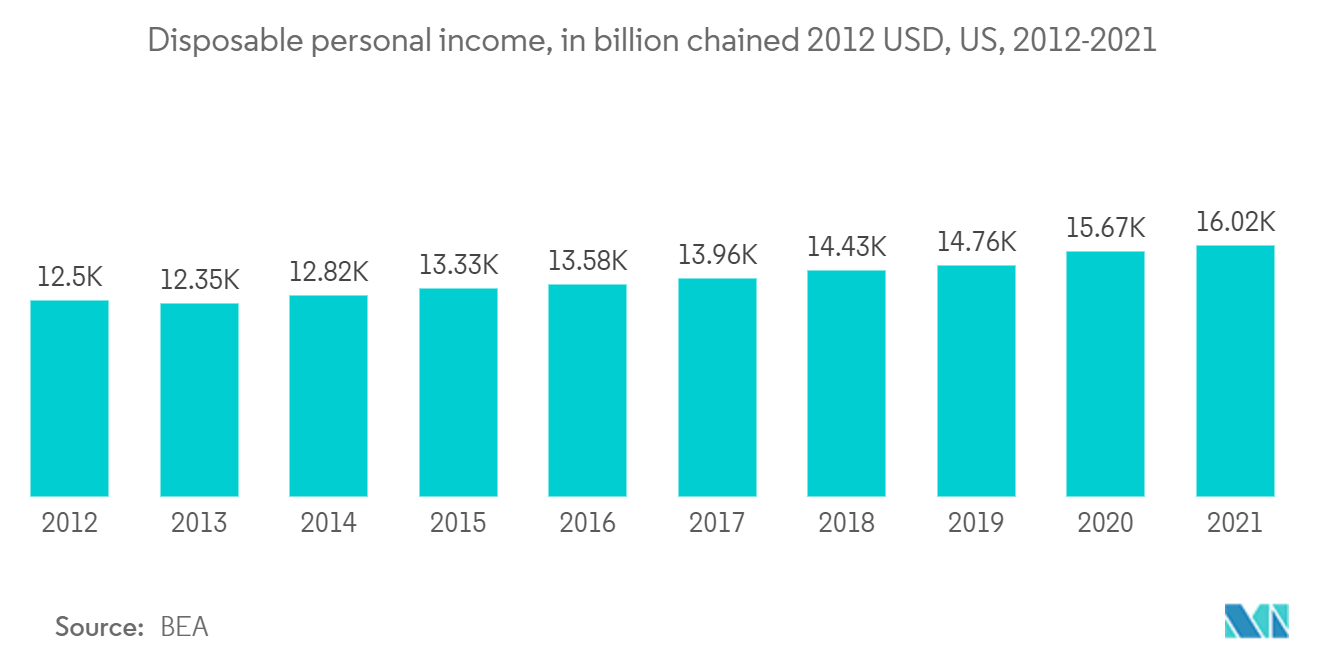Market Trends of North America Prefabricated Housing Industry
Increase in Prefabricated Housing Market in North America
In North America, the productivity of several construction projects slowed down due to a labor shortage. Hence, companies are expected to utilize prefabricated construction to complete the projects faster. The use of additive manufacturing made using energy-absorbing materials, such as micro homes, is likely to bolster industry growth in the region.
Also driving growth are the rapid growth of cities in areas of the region that are just starting to develop and the growing investments in the construction sector.People are becoming more interested in ready-made solutions for prefabricated houses that meet their needs, so the market is expected to grow at a moderate rate.Prefabricated houses are likely to become more popular because people like the way they are made, the approval process, how long they last, and how cheap they are.
Using eco-friendly materials to make high-quality prefab homes is likely to have a positive effect on the market.

Rising Disposable income and Rising Demand from Residential Construction to Drive the Growth of the Industry
Estimates from the Bureau of Economic Analysis show that personal income rose by USD 1,954.7 billion (10%) in January 2021. DPI went up by USD 1,963.2 billion (11.4%), and PCE went up by USD 340.9 billion (2.4%). Personal outlays increased by USD 348.7 billion in January. Personal savings reached USD 3.93 trillion in January, and the personal saving rate, as well as personal savings as a percentage of disposable personal income, was 20.5%.
Also, research shows that as the country's economy recovers from the COVID-19 pandemic, the construction industry as a whole is beginning to recover, with the residential sector leading the way. There could be a clear rise in market activity in key cities like Los Angeles, San Francisco, Dallas, and Miami. As long as there is a lot of pent-up demand and mortgage rates stay low, the residential sector will lead the way. As the population grows, the healthcare and education sectors will also grow to meet the needs of more people.
Even though there hasn't been much change in the number of construction jobs, states like Georgia, Colorado, and Texas have seen impressive population growth, even during the pandemic. According to some reports, almost 85% of this growth is due to lifestyle choices. As long as most people continue to work from home, the commercial and retail markets will have to keep changing to meet the needs of those markets. In the last six months, there has been a lot of activity at critical facilities and data centers. This is because the need for data, storage, and infrastructure keeps growing.
According to the US Census Bureau and the U.S. Department of Housing and Urban Development, there were a total of 1,682,000 privately owned housing units that were given building permits in February. This number is based on a seasonal adjustment. which was 10.8% below the revised January rate of 1,886,000 but was 17.0% above the February 2020 rate of 1,438,000. Single-family authorizations in February were at a rate of 1,143,000; this was 10.0% below the revised January figure of 1,270,000. Authorizations of units in buildings with five units or more were at a rate of 495,000 in February. Over the next few years, the prefabricated building industry will be driven by the rising demand for new homes and the rise in disposable income and personal income in the country.


